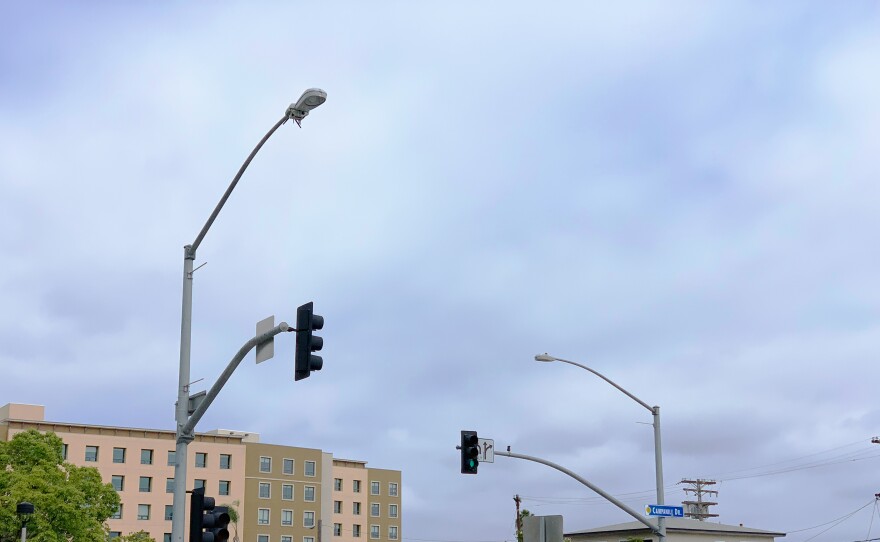A program meant to gather data on pedestrian and vehicle movement has turned into a tool for the San Diego Police Department.
The ability to help solve crimes was not the original intention sold to city council members when the Smart Streetlight program was approved in 2016. The program was pitched as an energy-saving program and a tool to help with city planning.
The council signed-off on upgrading about 25% of the city’s outdoor lights, a move expected to save the city $2.2 million a year. The new energy-efficient lighting also meant installing sensors that can record outdoor temperature, capture pedestrian and vehicle movement and record audio and video. In San Diego, the microphones haven’t been turned on, but video is being captured and saved for five days.
Lt. Jeffrey Jordon, the program manager for the smart streetlight program for the SDPD, said the footage is helping the department solve crimes.
“It’s helping us when a crime is reported to us to look for evidence we wouldn’t otherwise have,” he said.
The department began accessing the cameras last August. Since then, Lt. Jordon said information from the cameras has been used in 99 police investigations, mostly homicides, assaults and fatal car accidents.
The use of the sensors in police investigations was not part plan when it was approved by the city council. Two members of the council said they were not aware that police would have access to video recorded by the cameras.
The Lieutenant tried to address privacy concerns, saying the video can only be accessed by SDPD if a crime has occurred. He added the technology prevents them from seeing anything that is not public property.
“Say the street light was above someone’s residence where they have a fenced in backyard,” he said. “The technology actually recognizes the fenced off area and puts a screen over it so we wouldn’t be able to look beyond that fence line.”
The SDPD approved a policy using smart streetlight video in March, six months after they began accessing the footage. The policy requires the department to keep a log of when they access the video and provide the log to the public upon request.
In total the city expects to install 4,200 sensors around the city, most of them concentrated downtown. The city has a map of where the sensors are located.
The city is holding community meetings to gather feedback on the program and talk about the use of the sensor data by the SDPD. The next meeting is 5 p.m. on June 11 at the North University Community Library. More community meetings are scheduled throughout the summer and can be found on the city’s website.








